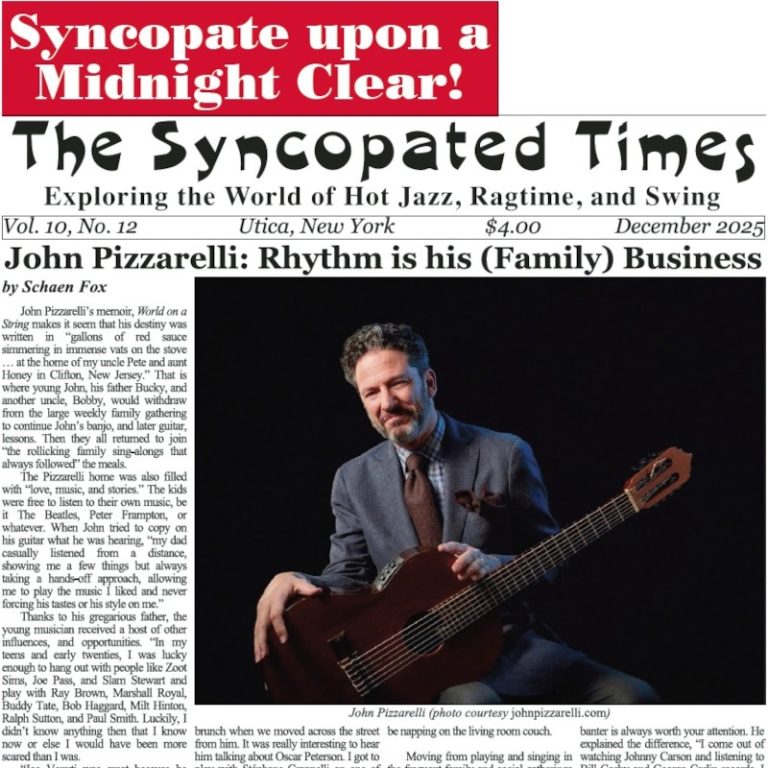Checking on the status of the few festivals scheduled to take place during the remaining months of 2020 is akin to reading the final chapters of Agatha Christie’s classic mystery, And Then There Were None. The Sun Valley Jazz & Music Festival (October 14-18) is only the latest to announce cancellation of their event for 2020.
The Historic Sutter Creek Ragtime Festival is happening. According to Festival Director Stevens Price, writing just before we send the paper to press:
“We are going to have a one-day festival on Saturday, August 15, at the Hillel Sutter in downtown Sutter Creek. With two pianos at the venue, music from 10-5, a break for dinner, and mini concert from 7-8:30. There is a 30-person maximum occupancy in the banquet room so we will be a small festival. We will have custom masks and will have T-shirts available.
“Performers are Paul Orsi, Michael Chisholm, Elliott Adams, Anthony Sarginson, Julia Riley, and Stevens Price.
“Our theme this year: ‘A Ragtime Pandemic.’”
Two other festivals in the West are still hopeful of being able to present live music performed by live musicians before entertainment-starved fans before the end of the year.
Responding to our inquiry, Arizona Classic Jazz Festival director Helen Daley replied, “We're still planning on the Festival November 5-8 at the San Marcus Resort in Chandler. I have the playing sch
You've read three articles this month! That makes you one of a rare breed, the true jazz fan!
The Syncopated Times is a monthly publication covering traditional jazz, ragtime and swing. We have the best historic content anywhere, and are the only American publication covering artists and bands currently playing Hot Jazz, Vintage Swing, or Ragtime. Our writers are legends themselves, paid to bring you the best coverage possible. Advertising will never be enough to keep these stories coming, we need your SUBSCRIPTION. Get unlimited access for $30 a year or $50 for two.
Not ready to pay for jazz yet? Register a Free Account for two weeks of unlimited access without nags or pop ups.
Already Registered? Log In
If you shouldn't be seeing this because you already logged in try refreshing the page.




